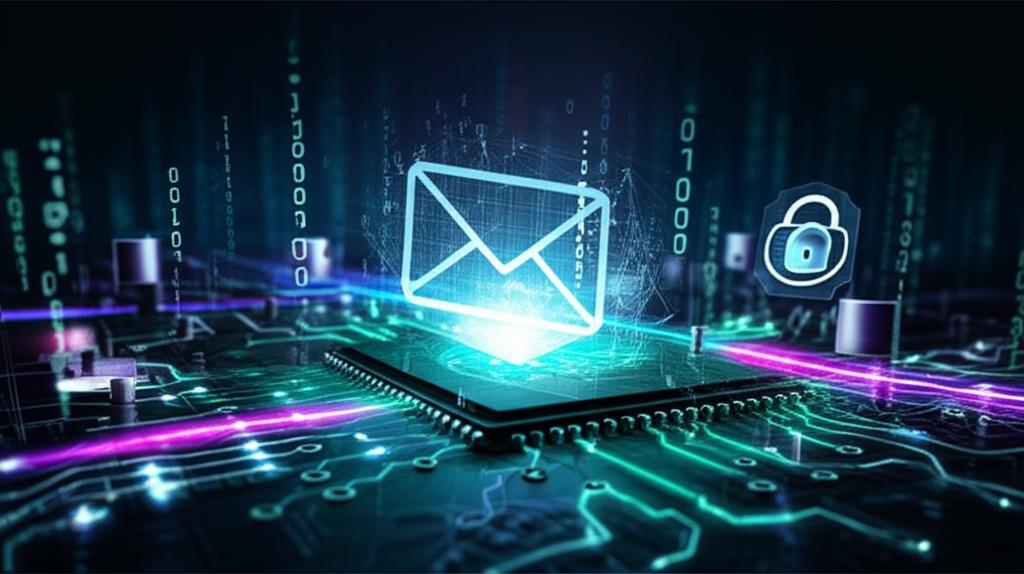Secure Your Inbox: The Essential Guide to Email Encryption
In an age where digital communication is paramount, the security of our private messages has become a critical concern. Email encryption stands as a robust defense mechanism, protecting sensitive information from unauthorized access. But what exactly is email encryption, and why is it so vital in our interconnected world?
Email encryption is the process of scrambling the content of an email message to protect its privacy and prevent it from being read by anyone other than the intended recipient. This cryptographic technique transforms readable plaintext into unreadable ciphertext, which can only be converted back into its original form with a specific key. It’s a fundamental pillar of digital security, ensuring that your personal and professional communications remain confidential.
Why Email Encryption is Absolutely Crucial
The importance of email encryption cannot be overstated. Here are several compelling reasons why it’s a non-negotiable aspect of modern communication:
- Ensuring Privacy: Your emails often contain highly personal, financial, or confidential business information. Email encryption prevents eavesdroppers, hackers, or even your email service provider from easily reading these communications.
- Protecting Sensitive Data: For businesses, email encryption is crucial for safeguarding intellectual property, customer data, and internal strategies. Without it, data breaches become a significant risk.
- Meeting Compliance Standards: Many industries are subject to strict regulatory requirements (e.g., GDPR, HIPAA, PCI DSS) that mandate the protection of sensitive data. Implementing robust email encryption helps organizations achieve and maintain compliance.
- Building Trust: For individuals and businesses alike, demonstrating a commitment to security through email encryption builds trust with contacts, clients, and partners, assuring them their communications are safe.
- Preventing Phishing and Tampering: While primarily focused on confidentiality, strong encryption can also make it harder for attackers to tamper with email content or successfully execute sophisticated phishing attacks, especially when combined with digital signatures.
How Email Encryption Works: A Simple Breakdown
At its core, email encryption relies on cryptographic keys. When you send an encrypted email, your email client uses a public key (belonging to the recipient) to encrypt the message. This scrambled message travels across the internet. Only the recipient, who possesses the corresponding private key, can decrypt and read the email.
The magic of encryption lies in the pairing of public and private keys – what one key locks, only its counterpart can unlock.
This process ensures that even if an email is intercepted during transit, its contents remain unintelligible to anyone without the correct private key, effectively rendering the information useless to unauthorized parties.
Key Types of Email Encryption
There are primarily two types of email encryption methods you’ll encounter, each offering different levels of security and implementation:
End-to-End Encryption (E2EE)
End-to-end encryption ensures that only the sender and the intended recipient can read the message. The email is encrypted at the sender’s device and remains encrypted until it reaches the recipient’s device, where it is decrypted. Not even the email service provider can access the content in plaintext.
- PGP (Pretty Good Privacy) / GPG (GNU Privacy Guard): Widely used for highly secure personal and professional communication, PGP and GPG are client-side encryption standards that require both sender and receiver to set up specific software.
- S/MIME (Secure/Multipurpose Internet Mail Extensions): Often used in enterprise environments, S/MIME integrates with many email clients (like Outlook) and uses digital certificates to encrypt and digitally sign emails, ensuring both confidentiality and authenticity.
Transport Layer Security (TLS)
TLS is a protocol that encrypts the connection between your email client/server and the recipient’s email server. While it secures the email during transit across the network, the email might be temporarily decrypted and re-encrypted as it passes through various servers, or stored unencrypted on an email provider’s server. Most modern email providers use TLS by default to protect data in transit, but it’s not truly “end-to-end” in the same way PGP or S/MIME are. It protects against passive eavesdropping on the network, but not necessarily against the email provider itself.
Implementing Email Encryption: Options for Users and Businesses
Adopting email encryption can be done in several ways:
- Client-Side Software: Utilizing email clients like Mozilla Thunderbird with add-ons (for PGP/GPG) or Microsoft Outlook with S/MIME certificates.
- Webmail Provider Features: Some webmail services (like ProtonMail or Tutanota) offer built-in end-to-end encryption. Others may provide server-side encryption or robust TLS connections.
- Dedicated Email Encryption Services: Third-party services designed specifically for secure email communication can be integrated with existing email setups or provide their own secure platforms.
The Future of Secure Communication with Email Encryption
As cyber threats continue to evolve in sophistication, the role of email encryption will only become more pronounced. It’s not just a technical feature; it’s a fundamental right to privacy and a critical component of data integrity in the digital realm. Embracing and understanding email encryption is essential for anyone looking to secure their digital communications effectively.







